Ultrasonic Extraction of Tropane Alkaloids from Radix physochlainae Using as Extractant an Ionic Liquid with Similar Structure
Abstract
:1. Introduction
2. Results and Discussion
2.1. Screening of Ionic Liquids
2.2. Effects of Extraction Conditions
2.3. Association Effect between Extractant and Solutes
2.4. Comparison with Traditional Extractant in Ultrasound Assisted Mode
2.5. Dissolution of Non-Alkaloid Constituents under Ultrasonic Extraction Conditions
2.6. Characterization of Plant Residue after Ultrasonic Extraction and Extract Solution
2.7. Optical Rotation Detection for Potential Racemization
2.8. Evaluation on Potential Toxicity of [C3Tr][PF6]
3. Materials and Methods
3.1. Reagents and Instruments
3.2. Ultrasonic Extraction Process
3.3. Characterization of Herbal Materials with Various Methods
3.3.1. Scanning Electron Microscopy (SEM) of the Raw Material and Residue after Extraction
3.3.2. Infrared Characterization (IR)
3.3.3. Near Infrared (NIR) Detection for Ultrasonic Extracts
3.4. Optical Rotation under Ultrasound Conditions
3.5. Recovery of IL and Target Products
4. Conclusions
Author Contributions
Funding
Conflicts of Interest
References
- Kerchev, P.; Ivanov, S. Influence of extraction techniques and solvents on the antioxidant capacity of plant material. Biotechnol. Biotechnol. Equip. 2008, 22, 556–559. [Google Scholar] [CrossRef]
- Sun, J.; An, L.; Zhang, Z.; Zhao, N.; Yuan, G.; Du, P. Extraction methods and sedative–hypnotic effects of polysaccharide and total flavonoids of Cordyceps militaris. Biotechnol. Biotechnol. Equip. 2018, 32, 498–505. [Google Scholar] [CrossRef]
- Xiao, J.; Chen, G.; Li, N. Ionic liquid solutions as a green tool for the extraction and isolation of natural products. Molecules 2018, 23, 1765. [Google Scholar] [CrossRef] [PubMed]
- Ventura, S.P.M.; e Silva, F.A.; Quental, M.V.; Mondal, D.; Freire, M.G.; Coutinho, J.A.P. Ionic-liquid-mediated extraction and separation processes for bioactive compounds: Past, present, and future trends. Chem. Rev. 2017, 117, 6984–7052. [Google Scholar] [CrossRef] [PubMed]
- Cao, X.; Ye, X.; Lu, Y.B.; Yu, Y.; Mo, W. Ionic liquid-based ultrasonic-assisted extraction of piperine from white pepper. Anal. Chim. Acta 2009, 640, 47–51. [Google Scholar] [CrossRef]
- Ma, W.; Lu, Y.; Hu, R.; Cheng, J.; Zhang, Z.; Pan, Y. Application of ionic liquids based microwave-assisted extraction of three alkaloids N-nornuciferine, O-nornuciferine, and nuciferine from lotus leaf. Talanta 2010, 80, 1292–1297. [Google Scholar] [CrossRef] [PubMed]
- Luo, J.; Song, H.; Zhang, Y.; Luo, W.; Li, T.; Yao, S. Ionic liquid-based ultrasonic-assisted extraction of berberine from rhizome of Coptis chinensis. Nat. Prod. Indian J. 2012, 8, 41–49. [Google Scholar]
- Ma, C.; Wang, S.; Yang, L.; Zu, Y.; Yang, F.; Zhao, C.; Zhang, L.; Zhang, Z. Ionic liquid-aqueous solution ultrasonic-assisted extraction of camptothecin and 10-hydroxycamptothecin from Camptotheca acuminata samara. Chem. Eng. Proc. Process Intensif. 2012, 57–58, 59–64. [Google Scholar] [CrossRef]
- Keremedchieva, R.; Svinyarov, I.; Bogdanov, M.G. Ionic liquid-assisted extraction as a sample preparation technique for HPLC determination of biologically active alkaloid galantamine in Leucojum aestivum (Summer snowflake). Planta Med. 2015, 81. [Google Scholar] [CrossRef]
- Dong, B.; Tang, J.; Yonannes, A.; Yao, S. Hexafluorophosphate salts with tropine-type cations in the extraction of alkaloids with the same nucleus from radix physochlainae. RSC Adv. 2018, 8, 262–277. [Google Scholar] [CrossRef]
- Dong, B.; Tang, J.; Guo, Z.; Zhu, Y.; Yao, S. Simultaneous recovery of ionic liquid and bioactive alkaloids with same tropane nucleus through an unusual co-crystal after extraction. J. Mol. Liq. 2018, 269, 287–297. [Google Scholar] [CrossRef]
- Li, L.; Yu, S.T.; Xie, C.X.; Liu, F.S.; Li, H.J. Synthesis of glycerol triacetate using functionalized ionic liquid as catalyst. J. Chem. Technol. Biotechnol. 2009, 84, 1649–1652. [Google Scholar] [CrossRef]
- Lu, J.; Song, H.; Yang, Y.; Qian, G.; Nie, L.; Yao, S. Synthesis and characterization of novel hexafluorophosphate salts with tropine-type cations. J. Mol. Liq. 2015, 209, 648–656. [Google Scholar] [CrossRef]
- Seddon, K.R.; Stark, A.; Torres, M.J. Influence of chloride, water, and organic solvents on the physical properties of ionic liquids. Pure Appl. Chem. 2000, 72, 2275–2287. [Google Scholar] [CrossRef]
- Zhao, S.M.; Chou, G.X.; Wang, Z.T. Chemical constituents from roots and rhizomes of Physochlaina infundibularis. Chin. Tradit. Herb. Drugs 2013, 44, 938–941. [Google Scholar] [CrossRef]
- Zheng, B.B.; Dou, Z.Y. Content determination of total terpene and scopoletin in different processed product of Fructus toosendan by UV method. J. Tianjin Univ. Tradit. Chin. Med. 2012, 31, 160–162. [Google Scholar]
- Wang, Y.; Yao, S.; Jia, C.; Chen, P.F.; Song, H. Swelling behaviors of natural cellulose in ionic liquid aqueous solutions. J. Appl. Polym. Sci. 2014, 131, 40199. [Google Scholar] [CrossRef]
- Swatloski, R.P.; Holbrey, J.D.; Memon, S.B.; Caldwell, G.A.; Caldwell, K.A.; Rogers, R.D. Using caenorhabditis elegans to probe toxicity of 1-alkyl-3-methylimidazolium chloride based ionic liquids. Chem. Commun. 2004, 35, 668–669. [Google Scholar] [CrossRef]
- Cho, C.W.; Pham, T.P.; Jeon, Y.C.; Vijayaraghavan, K.; Choe, W.S.; Yun, Y.S. Toxicity of imidazolium salt with anion bromide to a phytoplankton Selenastrum capricornutum: Effect of alkyl-chain length. Chemosphere 2007, 69, 1003–1007. [Google Scholar] [CrossRef]
- Chen, Y.; Xie, C.; Luo, Y.; Yao, S.; Song, H. Acute toxicity and damage of tissue from benzothiazole-based ionic liquids in zebrafish (Danio rerio). In Proceedings of the 2017 6th International Conference on Energy, Environment and Sustainable Development (ICEESD, 2017), Zhuhai, China, 11–12 March 2017. [Google Scholar] [CrossRef]
- Luo, Y.; Song, H.; Chen, Y.; Li, G.; Zhu, M. Benzothiazole-based ionic liquids (BIL)-induced acute toxicity attributed to damage to antioxidant enzyme system in zebrafish (Danio rerio). Bulg. Chem. Commun. 2017, 49, 190–194. [Google Scholar]
- General Administration of Quality Supervision, Inspection and Quarantine of the People Republic of China. Classification Test Method for Fish Acute Toxicity of Dangerous Chemicals (National Standard: No.GB/T 21281-2007); Standards Press of China: Beijing, China, 2007.
- International Organization for Standardization. Water Quality—Determination of the Acute Lethal Toxicity of Substances to a Freshwater Fish [Brachydanio Rerio Hamilton-Buchanan (Teleostei, Cyprinidae)] (ISO 7346: 1996); International Organization for Standardization: Geneva, Switzerland, 1996. [Google Scholar]
- Teng, J.; Lin, M.; Gao, J.; Dai, X.Z.; Lan, X.Q.; Song, H. Synthesis, characterization and properties of tropine-based ionic liquids gels. New J. Chem. 2019, 43, 199–207. [Google Scholar] [CrossRef]
- Li, S.H.; He, C.Y.; Liu, H.W.; Li, K.; Liu, F. Ionic liquid-based aqueous two-phase system, a sample pretreatment procedure prior to high-performance liquid chromatography of opium alkaloids. J. Chromatogr. B 2005, 826, 58–62. [Google Scholar] [CrossRef] [PubMed]
Sample Availability: Samples of the ionic liquids 1~8 are available from the authors. |
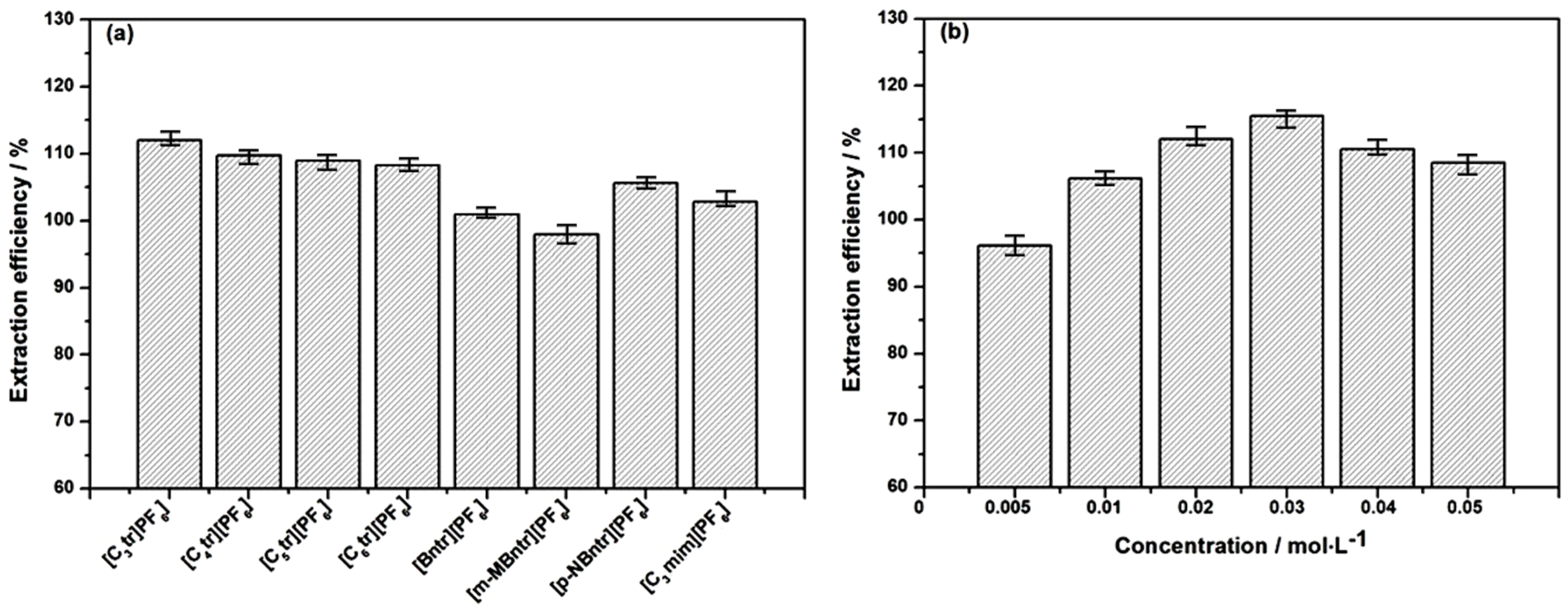
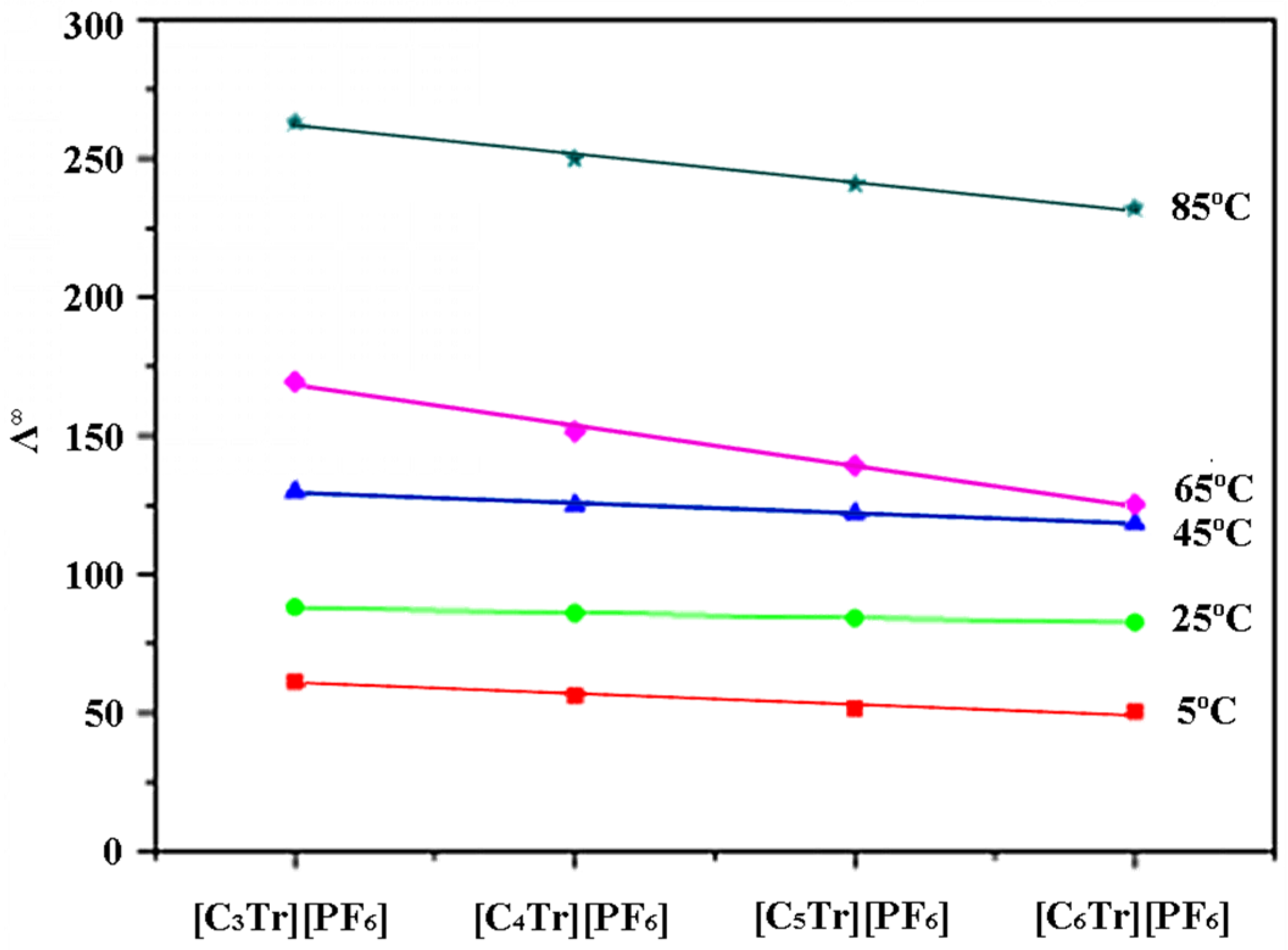
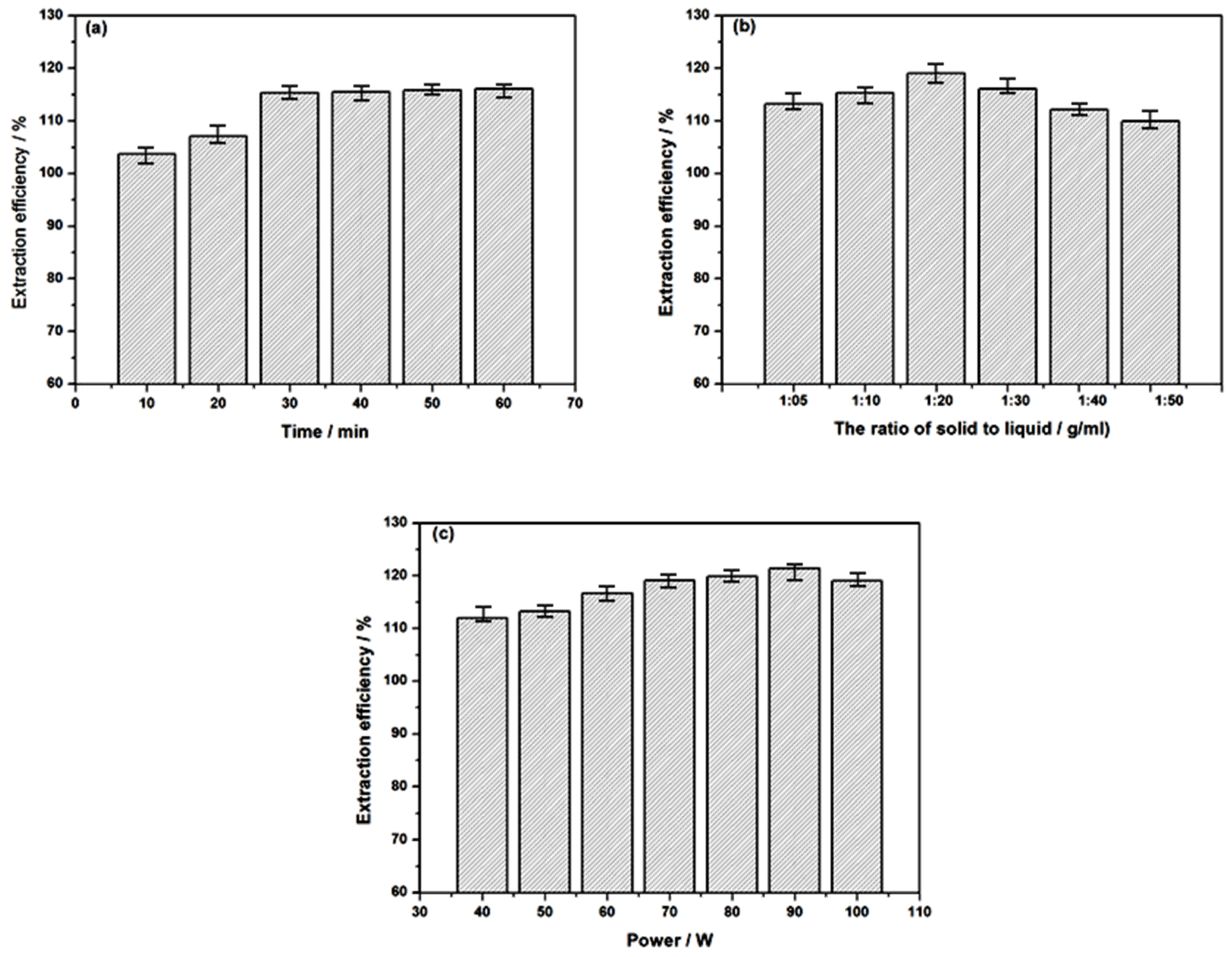
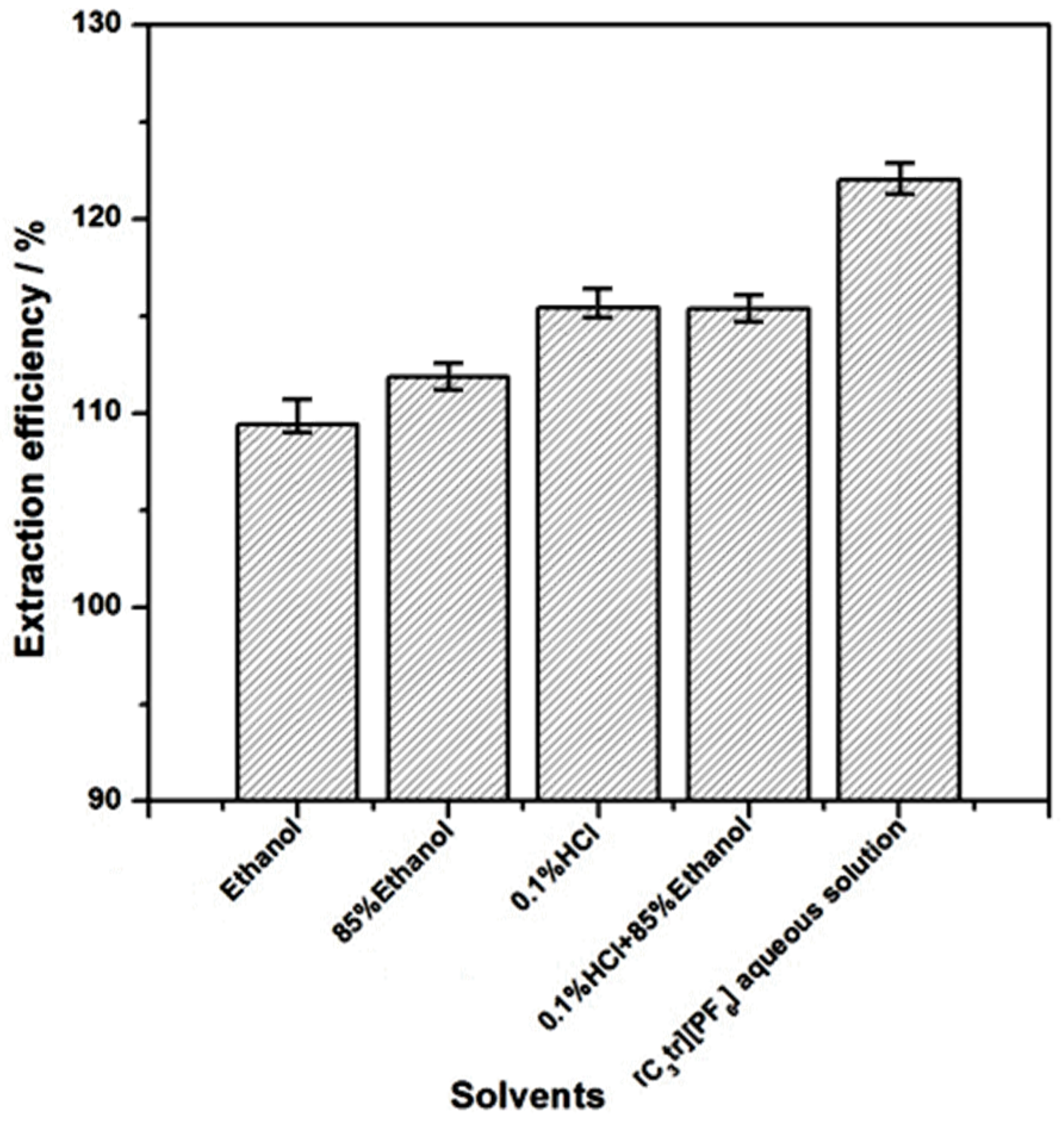

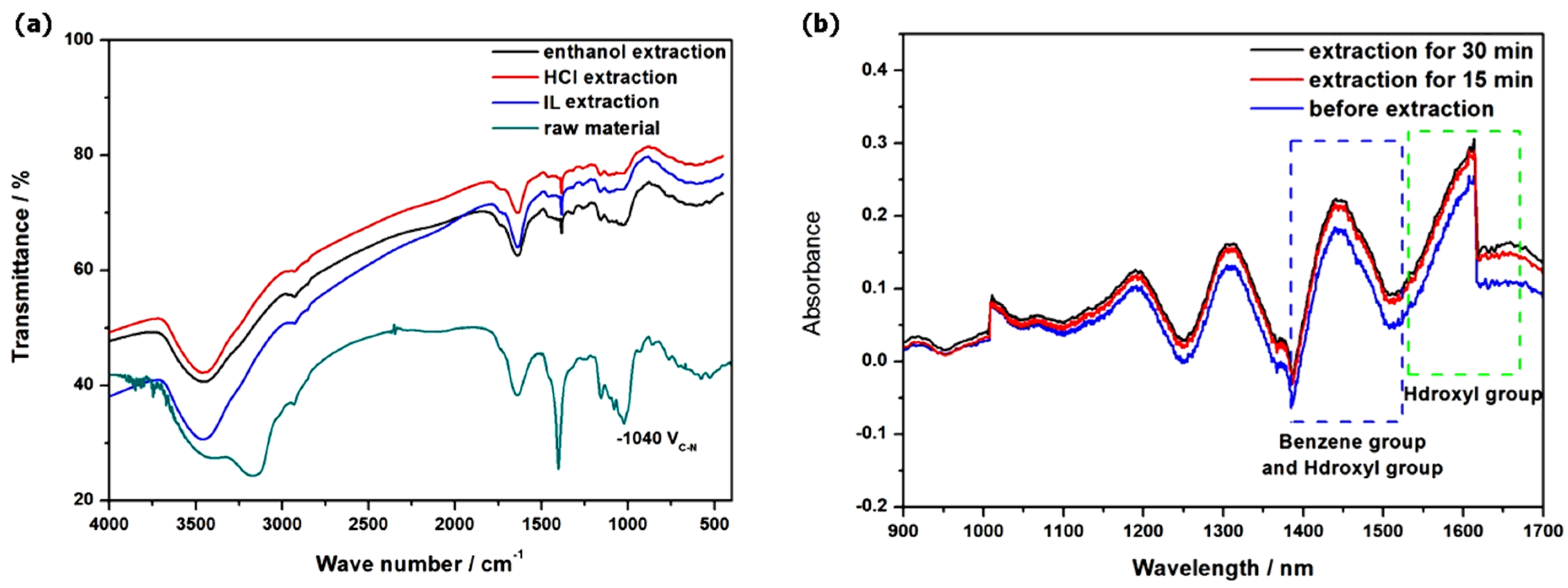
| Entry | IL Structure | IL Abbr. | Chemical Name | Acidity/Alkalinity * |
|---|---|---|---|---|
| 1 |  | [C3Tr][PF6] | N-Propyltropine hexafluorophosphate | Neutral |
| 2 |  | [C4Tr][PF6] | N-Butyltropine hexafluorophosphate | Neutral |
| 3 |  | [C5Tr][PF6] | N-Amyltropine hexafluorophosphate | Neutral |
| 4 |  | [C6Tr][PF6] | N-Hexyltropine hexafluorophosphate | Neutral |
| 5 |  | [Bntr][PF6] | N-Benzyltropine hexafluorophosphate | Neutral |
| 6 |  | [m-MBntr][PF6] | N-(m-Methoxybenzyl)-tropine hexafluorophosphate | Neutral |
| 7 |  | [p-NBntr][PF6] | N-(p-Nitrobenzyl)-tropine hexafluorophosphate | Neutral |
| 8 |  | [C3mim][PF6] | 1-Propyl-3-methyl-imidazolium hexafluorophosphate | Neutral |
| T | 104 C (mol·L−1) | Λ (S·cm2·mol−1) * | |||
|---|---|---|---|---|---|
| [C3tr][PF6] | [C4tr][PF6] | [C5tr][PF6] | [C6tr][PF6] | ||
| 5 °C | 10.0000 | 59.08 | 54.09 | 49.88 | 47.87 |
| 9.0909 | 59.27 | 54.27 | 50.02 | 48.09 | |
| 8.3333 | 59.44 | 54.42 | 50.14 | 48.28 | |
| 7.6923 | 59.58 | 54.55 | 50.24 | 48.43 | |
| 7.1429 | 59.70 | 54.66 | 50.33 | 48.57 | |
| 6.6667 | 59.80 | 54.75 | 50.41 | 48.69 | |
| 6.0000 | 59.95 | 54.89 | 50.52 | 48.86 | |
| 5.4545 | 60.07 | 55.00 | 50.61 | 49.00 | |
| 5.0000 | 60.18 | 55.10 | 50.69 | 49.12 | |
| 4.6154 | 60.26 | 55.18 | 50.75 | 49.22 | |
| 4.0000 | 60.41 | 55.31 | 50.85 | 49.39 | |
| 3.5294 | 60.52 | 55.41 | 50.93 | 49.51 | |
| 3.1579 | 60.60 | 55.49 | 51.00 | 49.62 | |
| 2.6087 | 60.73 | 55.60 | 51.09 | 49.77 | |
| 2.2222 | 60.82 | 55.69 | 51.16 | 49.87 | |
| 1.8182 | 60.92 | 55.78 | 51.23 | 49.99 | |
| 1.3953 | 61.02 | 55.87 | 51.30 | 50.11 | |
| 45 °C | 10.0000 | 121.41 | 116.10 | 113.37 | 111.25 |
| 9.0909 | 122.10 | 116.93 | 114.06 | 111.85 | |
| 8.3333 | 122.68 | 117.48 | 114.64 | 112.36 | |
| 7.6923 | 123.18 | 118.30 | 115.14 | 112.80 | |
| 7.1429 | 123.61 | 118.72 | 115.58 | 113.18 | |
| 6.6667 | 123.99 | 119.10 | 115.97 | 113.52 | |
| 6.0000 | 124.53 | 119.67 | 116.51 | 113.99 | |
| 5.4545 | 124.98 | 120.08 | 116.97 | 114.39 | |
| 5.0000 | 125.36 | 120.60 | 117.35 | 114.72 | |
| 4.6154 | 125.69 | 120.90 | 117.68 | 115.01 | |
| 4.0000 | 126.21 | 121.25 | 118.22 | 115.47 | |
| 3.5294 | 126.62 | 121.55 | 118.63 | 115.83 | |
| 3.1579 | 126.95 | 121.92 | 118.97 | 116.11 | |
| 2.6087 | 127.44 | 122.28 | 119.46 | 116.54 | |
| 2.2222 | 127.79 | 122.85 | 119.82 | 116.84 | |
| 1.8182 | 128.16 | 123.20 | 120.20 | 117.17 | |
| 1.3953 | 128.55 | 123.98 | 120.60 | 117.51 | |
| 65 °C | 10.0000 | 154.52 | 138.90 | 135.90 | 133.49 |
| 9.0909 | 155.67 | 140.36 | 136.86 | 134.40 | |
| 8.3333 | 156.66 | 141.12 | 137.69 | 135.18 | |
| 7.6923 | 157.52 | 141.57 | 138.40 | 135.86 | |
| 7.1429 | 158.27 | 142.10 | 139.03 | 136.45 | |
| 6.6667 | 158.93 | 142.65 | 139.58 | 136.97 | |
| 6.0000 | 159.87 | 143.33 | 140.36 | 137.71 | |
| 5.4545 | 160.66 | 143.92 | 141.02 | 138.33 | |
| 5.0000 | 161.33 | 144.60 | 141.57 | 138.85 | |
| 4.6154 | 161.90 | 145.17 | 142.05 | 139.30 | |
| 4.0000 | 162.84 | 145.50 | 142.82 | 140.03 | |
| 3.5294 | 163.57 | 146.77 | 143.43 | 140.59 | |
| 3.1579 | 164.15 | 146.93 | 143.91 | 141.05 | |
| 2.6087 | 165.03 | 148.73 | 144.64 | 141.73 | |
| 2.2222 | 165.66 | 149.85 | 145.16 | 142.22 | |
| 1.8182 | 166.34 | 152.35 | 145.71 | 142.74 | |
| 1.3953 | 167.05 | 154.08 | 146.30 | 143.29 | |
| 85 °C | 10.0000 | 231.05 | 228.37 | 215.57 | 199.14 |
| 9.0909 | 233.38 | 230.04 | 217.65 | 200.88 | |
| 8.3333 | 235.39 | 231.48 | 219.44 | 202.36 | |
| 7.6923 | 237.13 | 232.72 | 221.00 | 203.66 | |
| 7.1429 | 238.68 | 233.80 | 222.37 | 204.79 | |
| 6.6667 | 240.05 | 234.76 | 223.58 | 205.79 | |
| 6.0000 | 242.02 | 236.12 | 225.33 | 207.23 | |
| 5.4545 | 243.68 | 237.26 | 226.79 | 208.43 | |
| 5.0000 | 245.09 | 238.23 | 228.05 | 209.46 | |
| 4.6154 | 246.31 | 239.06 | 229.13 | 210.34 | |
| 4.0000 | 248.32 | 240.41 | 230.90 | 211.78 | |
| 3.5294 | 249.90 | 241.46 | 232.29 | 212.91 | |
| 3.1579 | 251.18 | 242.31 | 233.41 | 213.82 | |
| 2.6087 | 253.11 | 243.58 | 235.11 | 215.19 | |
| 2.2222 | 254.50 | 244.49 | 236.33 | 216.18 | |
| 1.8182 | 255.99 | 245.46 | 237.64 | 217.23 | |
| 1.3953 | 257.59 | 246.48 | 239.04 | 218.35 | |
| Concentration g/mL | Λ∞ S·cm2·mol−1 | KA L·mol−1 | Λ∞ S·cm2·mol−1 | KA L·mol−1 | Λ∞ S·cm2·mol−1 | KA L·mol−1 |
|---|---|---|---|---|---|---|
| 303.15K | 313.15K | 323.15K | ||||
| 0.000 | 79.365 | 18.896 | 116.279 | 40.562 | 156.250 | 48.828 |
| 0.225 | 87.719 | 23.084 | 117.647 | 41.522 | 169.492 | 57.455 |
| 0.451 | 90.090 | 24.349 | 135.135 | 54.785 | 175.439 | 61.557 |
| 0.676 | 96.899 | 28.278 | 120.481 | 43.548 | 166.670 | 55.556 |
| 0.901 | 91.743 | 25.250 | 114.942 | 39.635 | 161.290 | 52.029 |
| 1.126 | 90.909 | 24.793 | 116.279 | 40.562 | 158.730 | 50.391 |
| 333.15 K | 343.15 K | |||||
| 0.000 | 192.308 | 73.965 | 208.333 | 86.806 | ||
| 0.225 | 200.000 | 80.000 | 227.272 | 103.306 | ||
| 0.451 | 212.766 | 90.539 | 212.766 | 90.539 | ||
| 0.676 | 196.078 | 76.894 | 212.766 | 86.806 | ||
| 0.901 | 192.308 | 76.894 | 217.391 | 94.518 | ||
| 1.126 | 163.934 | 53.745 | 217.391 | 94.518 | ||
| pH | Content of Scopoletin in the Extract (mg/g) | ||
|---|---|---|---|
| 80% EtOH | 85% EtOH | 0.03 mol/L [C3tr][PF6] | |
| 3 | 1.20 ± 0.02 | 1.21 ± 0.02 | 1.09 ± 0.02 |
| 5 | 1.08 ± 0.02 | 1.12 ± 0.02 | 1.08 ± 0.02 |
| 7 | 1.06 ± 0.02 | 1.09 ± 0.02 | 1.05 ± 0.02 |
| Test Samples | Optical Rotation at Various Temperatures (Mean Value of Three Parallel Experiments) | ||
|---|---|---|---|
| 25 °C | 35 °C | 50 °C | |
| [C3Tr][PF6] + H2O | 0.000 | 0.000 | 0.000 |
| Anisodamine + H2O | −0.029 | −0.023 | −0.020 |
| Anisodamine+[C3Tr][PF6] + H2O | −0.029 | −0.023 | −0.019 |
| Anisodamine + NH3·H2O | −0.016 | −0.014 | −0.008 |
© 2019 by the authors. Licensee MDPI, Basel, Switzerland. This article is an open access article distributed under the terms and conditions of the Creative Commons Attribution (CC BY) license (http://creativecommons.org/licenses/by/4.0/).
Share and Cite
Yohannes, A.; Zhang, B.; Dong, B.; Yao, S. Ultrasonic Extraction of Tropane Alkaloids from Radix physochlainae Using as Extractant an Ionic Liquid with Similar Structure. Molecules 2019, 24, 2897. https://doi.org/10.3390/molecules24162897
Yohannes A, Zhang B, Dong B, Yao S. Ultrasonic Extraction of Tropane Alkaloids from Radix physochlainae Using as Extractant an Ionic Liquid with Similar Structure. Molecules. 2019; 24(16):2897. https://doi.org/10.3390/molecules24162897
Chicago/Turabian StyleYohannes, Alula, Baohui Zhang, Bing Dong, and Shun Yao. 2019. "Ultrasonic Extraction of Tropane Alkaloids from Radix physochlainae Using as Extractant an Ionic Liquid with Similar Structure" Molecules 24, no. 16: 2897. https://doi.org/10.3390/molecules24162897
APA StyleYohannes, A., Zhang, B., Dong, B., & Yao, S. (2019). Ultrasonic Extraction of Tropane Alkaloids from Radix physochlainae Using as Extractant an Ionic Liquid with Similar Structure. Molecules, 24(16), 2897. https://doi.org/10.3390/molecules24162897







